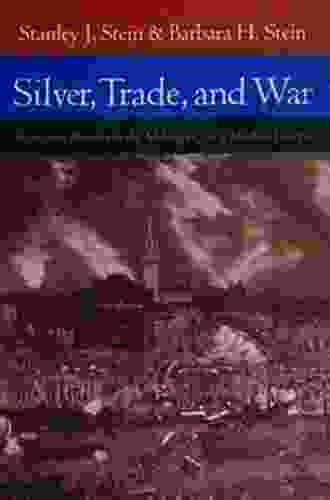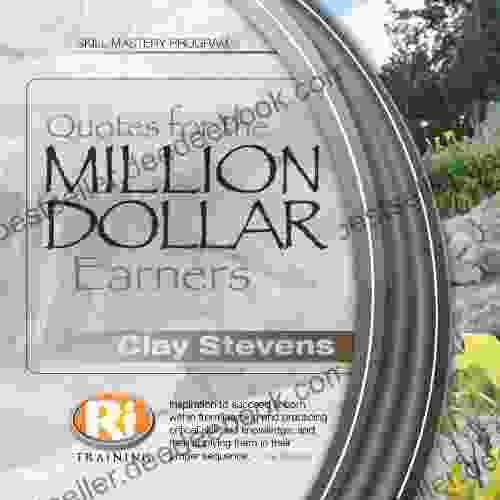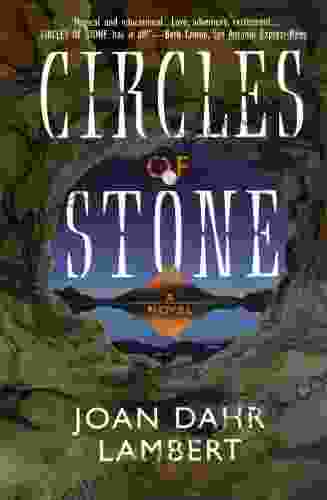Silver Trade and War: The Global Implications of a Precious Metal

Silver, a lustrous and malleable metal, has played a pivotal role in human history, shaping economies, fueling conflicts, and leaving an indelible mark on global affairs. From ancient times to the modern era, the trade in silver has been intertwined with war, influencing the rise and fall of empires and leaving a lasting legacy on the world stage.
The Ancient World: Silver as a Medium of Exchange
In the ancient world, silver emerged as a valuable medium of exchange, facilitating trade and commerce across vast distances. The Phoenicians, renowned for their maritime prowess, established a vast silver trade network that spanned the Mediterranean Sea. Coins made of silver, known as drachmas and shekels, became the primary form of currency, enabling merchants to conduct transactions across different cultures and regions.
5 out of 5
| Language | : | English |
| File size | : | 3184 KB |
| Text-to-Speech | : | Enabled |
| Screen Reader | : | Supported |
| Enhanced typesetting | : | Enabled |
| Print length | : | 495 pages |
| Lending | : | Enabled |
The silver mines of Laurion in Greece played a crucial role in the Athenian economy. The revenue generated from these mines funded the construction of the Parthenon and the development of a formidable navy, which transformed Athens into a maritime superpower. Silver also fueled the Roman Empire's expansion, as Roman legions plundered vast amounts of silver from conquered territories. The silver booty acquired during the Punic Wars and the conquest of Gaul enriched the Roman treasury, allowing for the construction of monumental structures and the maintenance of a vast military machine.
Medieval Europe: Silver and the Rise of Merchant Republics
During the Middle Ages, the Italian merchant republics of Venice, Genoa, and Florence emerged as major players in the silver trade. They established trading posts throughout the Mediterranean and Black Seas, importing silver from Germany and Hungary and distributing it to various European markets. The silver trade brought immense wealth and power to these maritime cities, transforming them into vibrant economic and cultural hubs.
The discovery of silver mines in Central Europe, particularly in the Erzgebirge mountains of Germany and Bohemia, further fueled the silver trade. The influx of silver into Europe led to a period of economic growth and prosperity known as the "Silver Revolution." Silver coins, known as "thaler," became the standard currency in many European countries and facilitated trade and commerce on a grand scale.
The Age of Exploration: Silver and the New World
The Age of Exploration marked a transformative era in the silver trade. The Spanish conquest of the Americas uncovered vast silver deposits in Mexico and Peru. The silver mines of Potosí in Bolivia, one of the largest silver deposits ever discovered, yielded enormous quantities of silver that flooded the European market.
The influx of silver from the New World had a profound impact on global trade and politics. The Spanish Habsburg Empire, which controlled much of the silver production in the Americas, emerged as the dominant power in Europe. Silver became the sinews of war, funding the Spanish armies and enabling them to maintain their vast empire.
However, the sudden influx of silver also caused economic turmoil in Europe. The devaluation of silver led to inflation and social unrest. The Spanish government, heavily dependent on silver revenues, faced bankruptcy when the silver mines in the New World began to decline.
The Rise of China: Silver and the Tea Trade
In the 17th and 18th centuries, China emerged as a major consumer of silver. The Chinese demand for silver, driven by the growing popularity of tea, led to a significant trade imbalance between Europe and Asia. European merchants, eager to acquire Chinese tea, porcelain, and silk, paid for these goods with vast amounts of silver.
The silver trade with China had far-reaching consequences. The influx of silver into China fueled economic growth and prosperity, but it also contributed to political instability and social unrest. The Chinese government, unable to control the influx of silver, faced inflation and a weakening of its currency.
The 19th Century: Silver and Imperialism
The 19th century witnessed a renewed scramble for silver. The discovery of new silver deposits in the American West, particularly in the Comstock Lode in Nevada, fueled the California Gold Rush and attracted speculators from around the world. The United States emerged as a major silver producer, rivaling Mexico and Peru.
The British Empire, eager to secure its global dominance, pursued an aggressive strategy to control the silver trade. The British established colonial outposts in India, Burma, and Malaya, where they exploited silver mines and used silver to fund their military campaigns. The British Raj, in particular, imposed a silver standard on India, forcing the country to use silver as its primary currency. This policy drained India of its silver and contributed to its economic exploitation.
The 20th Century: Silver, Investment, and the Market
In the 20th century, silver continued to play a significant role in global finance and investment. The silver market experienced periods of volatility and speculative booms, particularly during times of economic uncertainty. The Hunt brothers, Texas oil magnates, attempted to corner the silver market in the 1970s, leading to a dramatic increase in silver prices. However, their scheme ultimately failed, and the silver market crashed.
Today, silver remains a valuable commodity, used in jewelry, electronics, and industrial applications. It is also a popular investment asset, particularly among those seeking a hedge against inflation or economic volatility. The silver market continues to be influenced by global economic conditions, supply and demand dynamics, and geopolitical events.
Silver and War: A Double-Edged Sword
Throughout history, silver has been a double-edged sword in the context of war. On the one hand, silver has provided resources to fund military campaigns and build powerful armies. The silver mines of Potosi, for example, played a crucial role in financing the Spanish Empire's military adventures in Europe and the Americas.
On the other hand, the pursuit of silver has often led to conflict and bloodshed. The Spanish conquest of the Americas was motivated in large part by the desire for silver and gold. The European powers competed fiercely for control of silver-producing regions, leading to wars and colonial expansion. The scramble for silver in the 19th century contributed to imperialism and the exploitation of weaker nations.
Silver and Diplomacy: Fostering Cooperation
While silver has been a catalyst for war, it has also played a role in fostering cooperation and diplomacy. The silver trade between Europe and Asia in the 17th and 18th centuries led to cultural exchange and the development of new trade routes. The silver standard, adopted by many countries in the 19th century, facilitated international trade and promoted economic stability.
The silver trade has left an indelible mark on human history, shaping economies, fueling conflicts, and influencing global affairs. From the ancient world to the modern era, silver has been a coveted and contested commodity, its pursuit often leading to both wealth and bloodshed. Today, silver remains a valuable resource and investment asset, its future course influenced by a complex interplay of economic, political, and social factors.
5 out of 5
| Language | : | English |
| File size | : | 3184 KB |
| Text-to-Speech | : | Enabled |
| Screen Reader | : | Supported |
| Enhanced typesetting | : | Enabled |
| Print length | : | 495 pages |
| Lending | : | Enabled |
Do you want to contribute by writing guest posts on this blog?
Please contact us and send us a resume of previous articles that you have written.
 Book
Book Text
Text Library
Library Paperback
Paperback Newspaper
Newspaper Sentence
Sentence Bookmark
Bookmark Shelf
Shelf Foreword
Foreword Preface
Preface Synopsis
Synopsis Annotation
Annotation Footnote
Footnote Codex
Codex Tome
Tome Bestseller
Bestseller Classics
Classics Narrative
Narrative Biography
Biography Reference
Reference Encyclopedia
Encyclopedia Dictionary
Dictionary Character
Character Resolution
Resolution Catalog
Catalog Card Catalog
Card Catalog Borrowing
Borrowing Archives
Archives Periodicals
Periodicals Study
Study Scholarly
Scholarly Reserve
Reserve Academic
Academic Reading Room
Reading Room Rare Books
Rare Books Interlibrary
Interlibrary Literacy
Literacy Thesis
Thesis Book Club
Book Club Theory
Theory Gloria D Miklowitz
Gloria D Miklowitz Bob Stone
Bob Stone Anne Marie Pace
Anne Marie Pace Teodolinda Barolini
Teodolinda Barolini Lee Hammond
Lee Hammond David Barnett
David Barnett Jorge Lozano
Jorge Lozano Leisure Arts
Leisure Arts Lillian S Weiss
Lillian S Weiss Andrew Welch
Andrew Welch Lana Kortchik
Lana Kortchik Jeffrey Rosen
Jeffrey Rosen Eden Unger Bowditch
Eden Unger Bowditch Tuong Vu
Tuong Vu Robin Gardiner
Robin Gardiner Suze Rotolo
Suze Rotolo Sara L Schwebel
Sara L Schwebel Linda Phyllis Austern
Linda Phyllis Austern Lilah Rivers
Lilah Rivers Susan Crockford
Susan Crockford
Light bulbAdvertise smarter! Our strategic ad space ensures maximum exposure. Reserve your spot today!
 Preston SimmonsFollow ·11.8k
Preston SimmonsFollow ·11.8k Anton ChekhovFollow ·9.6k
Anton ChekhovFollow ·9.6k Henry JamesFollow ·3.5k
Henry JamesFollow ·3.5k Dillon HayesFollow ·14.7k
Dillon HayesFollow ·14.7k Allan JamesFollow ·15.2k
Allan JamesFollow ·15.2k Alvin BellFollow ·5.9k
Alvin BellFollow ·5.9k Gus HayesFollow ·5.9k
Gus HayesFollow ·5.9k Jeremy MitchellFollow ·12.3k
Jeremy MitchellFollow ·12.3k

 Brian Bell
Brian BellClassic Festival Solos Bassoon Volume Piano...
The Classic Festival Solos Bassoon Volume...

 Aubrey Blair
Aubrey BlairUnveiling the Courage: Insurgent Women Female Combatants...
In the face of armed...

 Jan Mitchell
Jan MitchellFor The Liberty Of Texas: The Lone Star State's Fight for...
The Republic of Texas was a sovereign state...

 Edgar Allan Poe
Edgar Allan PoeVisible, Explainable, Trustworthy, and Transparent...
What is VET2...
5 out of 5
| Language | : | English |
| File size | : | 3184 KB |
| Text-to-Speech | : | Enabled |
| Screen Reader | : | Supported |
| Enhanced typesetting | : | Enabled |
| Print length | : | 495 pages |
| Lending | : | Enabled |















